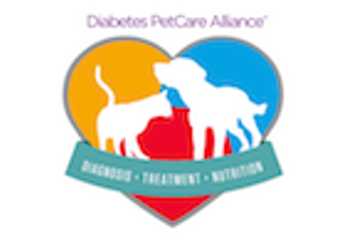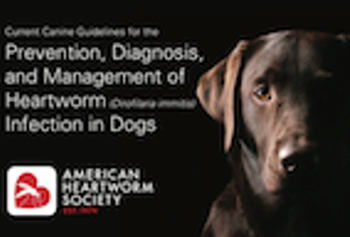
What potential dangers should pet owners know about after a hurricane or other natural disaster?

What potential dangers should pet owners know about after a hurricane or other natural disaster?

Evidence from 54 studies suggests that the lone star tick cannot transmit Borrelia burgdorferi.

The FDA’s Center for Veterinary Medicine is instituting a 5-year plan to support antimicrobial stewardship in veterinary settings.

In advance of National Pet Diabetes Month in November, the Diabetes PetCare Alliance program is now accepting enrollment.

The American Heartworm Society has released updated guidelines for the prevention, testing, and treatment of canine heartworm.

The US Department of Agriculture has expanded the indication for Cytopoint (Zoetis) to include allergic dermatitis in dogs.

Bayer and NeuroCycle Therapeutics have signed a global license agreement with plans to bring to market new treatments for allergies in dogs and cats.

Investigators found that over a 6-year period the number of babesiosis cases decreased as the number of canine veterinary visits rose.

Nearly all responding general practitioners in the United Kingdom reported cases of pseudopregnancy, most often diagnosed by behavioral signs.

According to a recent review, oral vaccination may significantly reduce canine rabies cases worldwide.

A new study reveals that some commonly reported risk factors for urine marking and latrine behavior in cats may not play a role in the behaviors after all.

Steve’s Real Food is recalling 3 lots of raw pet food due to the potential for contamination with Salmonella and Listeria.

WSAVA recently assessed small animal infectious disease and vaccinology trends in Mexico, and offered practitioners guidance on best vaccine practices.

Results of a multicenter study show initial success in dogs with OA using a simple, cost-effective, and minimally invasive stem cell procedure created for people.

In addition to meeting the tremendous demands of veterinary school, these 4 standouts were awarded for their long-time dedication to animal advocacy.

A recent study highlighted limitations in pharmacists’ knowledge of toxic pharmaceutical ingredients and household substances.

A new study finds that relatively few publications address the most common diseases.

Canine infection with Brucella canis is endemic in much of the world, but what risk does it pose to public health?

Did you miss any important veterinary medicine news last month? These were the 5 most popular articles from August.

In light of the ongoing opioid abuse epidemic, a new FDA resource center includes recommendations for veterinarians who stock or prescribe opioids to their patients.

Is topical fluralaner effective in controlling Ixodes holocyclus infestations in cats?

An evaluation of the prevalence and anatomic characteristics of thoracic caudal articular process dysplasia in French bulldogs, English bulldogs, and pugs presenting for problems unrelated to spinal disease.

How long do shelter cats with panleukopenia virus survive, and what factors are at play in determining outcome?

A simple blood test may soon replace invasive biopsies for detecting liver disease in many dogs, all thanks to teamwork between veterinarians and medical doctors in London.

Photobiomodulation can improve healing—and quality of life—for veterinary patients with a host of health conditions.

What is the role of minimally invasive bronchoscopy in the treatment of tracheal tumors in cats?

A novel gene therapy has been developed to treat one of the most common forms of retinitis pigmentosa, a disease that causes vision loss in both dogs and humans.

Centragard, which prevents infection with heartworms, roundworms, hookworms, and tapeworms in cats and kittens, is now available.

More than 100 animal products manufactured by King Bio have been recalled due to high levels of microbial contamination.

A recent study examined whether sucralfate inhibited growth of common pathogenic bacteria, such as Pseudomonas and Staphylococcus.